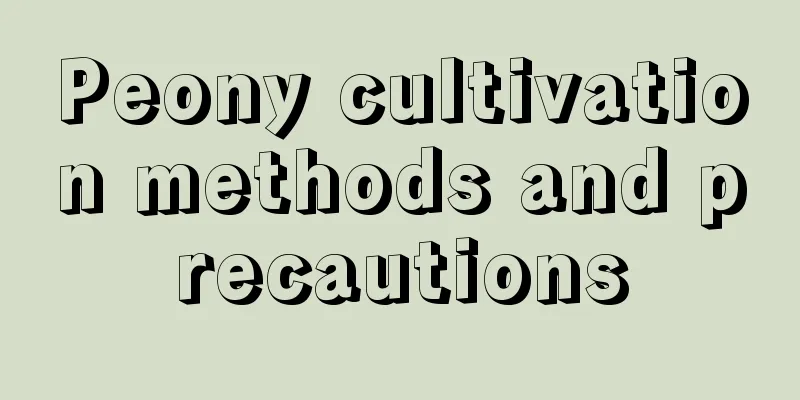Peony cultivation methods and precautions

1. SoilThe soil requirements for maintaining peonies are not high. Fertile sandy soil with good drainage is the best. You can also use leaf mold, original soil and river sand to mix to make nutrient soil. No matter what kind of soil you choose for cultivation, it must be disinfected. You can choose carbendazim for sterilization to reduce the occurrence of diseases and pests. 2. MoistureWhen the temperature rises in spring, peonies can be moved outdoors for cultivation. At this time, they should be watered thoroughly and the soil should be loosened, protecting the roots while loosening the soil. Especially in spring, when new buds sprout and before and after flowering, there must be sufficient water. In the dry north, you can water more, but not too much. Long-term accumulation of water will cause root rot. Do not water when the sun is too strong at noon in summer. It is best to water in the early morning and evening. You can add some fertilizer when watering before and after flowering, and use fertilizer and water to supplement nutrients to make the flowers bloom more vigorously. 3. FertilizationThe timing of fertilizing peonies is very important. Do not add fertilizer to new plants within half a year to avoid fertilizer damage. Fertilize again after half a year. Before the flowers bloom in spring, the temperature has just risen and the leaves begin to sprout. At this time, fertilize to accumulate nutrients for flowering; add fertilizer again after the flowers fade to replenish the nutrients consumed by flowering, and it can also help differentiate new flower buds; add fertilizer again before winter to prepare for overwintering. Generally, it is enough to apply this fertilizer three times a year, and the fertilizer should not be too concentrated. 4. Light and temperatureAdequate light is very beneficial to the growth of peony. Daily light can replenish nutrients, but strong light in summer and direct sunlight at noon should be avoided to prevent sunburn and excessive water loss. It can be maintained at normal room temperature, and the temperature should be controlled at around 25 degrees. Pay attention to ventilation before and after flowering to avoid high temperature stewing and affecting flowering. Move indoors in winter. |
<<: Orchid cultivation methods and precautions
>>: Lily cultivation methods and precautions
Recommend
Do you think the flowers are not growing strong enough in autumn? Dilute it with some water and water the flowers, and the leaves will grow strong and lush!
People who grow flowers basically treat plants as...
Cultivation methods and precautions of white crystal chrysanthemum
The plant of white crystal daisy is relatively ea...
How to keep seeds of Peucedanum chinense and how to collect seeds
Method of preserving seeds of Peucedanum Peucedan...
These 9 types of chrysanthemums bloom into a sea in summer, and the more you look at them, the more you want to grow them!
Cosmos Cosmos grows in bushes. Its pink and white...
Is the fortune tree acidic or alkaline? Should it be grown indoors or outdoors?
1. Acidic or alkaline The money tree is a plant t...
How to Propagate Chayote
1. Whole melon propagation This method requires y...
What is the value of African ice grass
Edible value of African ice grass African ice gra...
How many years does black jujube bear fruit?
Black dates have been planted for several years a...
How to make bonsai of Albizia Julibrissin
Select tree species The best tree species is a tr...
How to grow variegated trachelospermum so that the leaves are colorful
The color of the leaves of Trachelospermum ovata ...
How to grow tree ice and what to pay attention to
1. Maintenance methods 1. Soil: Juhyo likes to gr...
Not only Chlorophytum comosum can be grown hangingly! These 10 kinds of succulents are so beautiful when hung!
Buddhist beads The name of Buddhist beads is just...
What should I pay attention to when repotting mint?
Mint is a common potted ornamental plant. In orde...
What is the reason why the leaves of tiger lily become soft?
1. Strong light exposure Reason: Tiger Piranha is...
When is the best time to propagate Schlumbergera by cuttings (method and time for Schlumbergera to survive by cuttings)
When is the best time to take cuttings of Christm...









